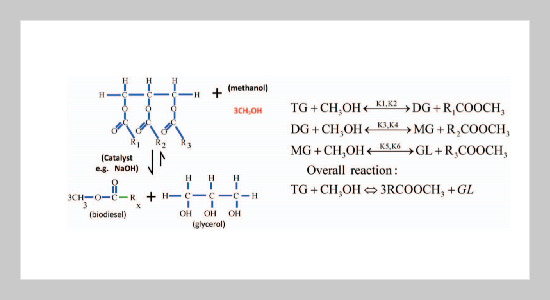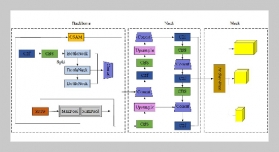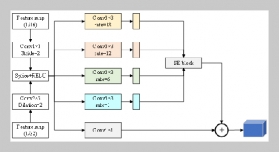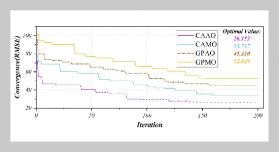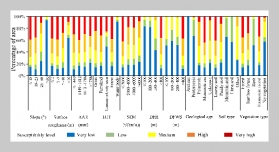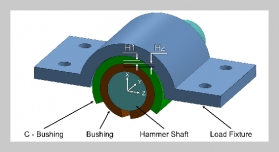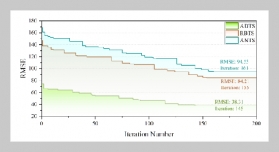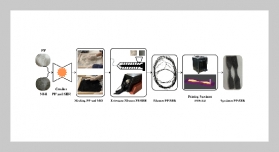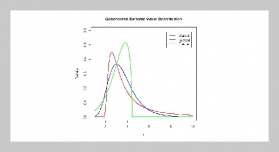REFERENCES
- [1] A Comprehensive Analysis of Biodiesel Impacts on Exhaust Emissions, U.S. Environmental Protection Agency (2002).
- [2] Peterson, C., Wagner, G. and Auld, D., “Vegetable Oil Substitutes for Diesel Fuel.,” Transactions of the ASAE (American Society of Agricultural Engineers), Vol. 26, No. 2, pp. 322327, 332 (1983). doi: 10.13031/2013. 33929
- [3] Sheehan, J., et al., Life Cycle Inventory of Biodiesel and Petroleum Diesel for Use in an Urban Bus, Final Report, National Renewable Energy Lab., Golden, CO (US) (1998).
- [4] Zhang, Y., et al., “Biodiesel Production from Waste Cooking Oil: 2. Economic Assessment and Sensitivity Analysis,” Bioresource Technology, Vol. 90, No. 3, pp. 229240 (2003). doi: 10.1016/S0960-8524(03)00 150-0
- [5] Zhang, Y. A., et al., “Biodiesel Production from Waste Cooking Oil: 1. Process Design and Technological Assessment,” Bioresource Technology, Vol. 89, No. 1, pp. 116 (2003). doi: 10.1016/S0960-8524(03)00040-3
- [6] Knothe, G., Historical Perspectives on Vegetable Oilbased Diesel Fuels, Inform, Vol. 12, No. 11, pp. 1103 1107 (2001).
- [7] Severson, K., Martín, M., and Grossmann, I. E., “Optimal Integration for Biodiesel Production Using Bioethanol,” AIChE Journal, Vol. 59, pp. 834844 (2013). doi: 10.1002/aic.13865
- [8] Bradihaw, G. B. and Meuly, W. C., U.S. Patent 2,271,619A (1942).
- [9] Bradshaw, G. B, “New Soap Process, Soap,” May, 18, pp. 2324 (1942).
- [10] Bradshaw, G. B. and Meuly, W. C., U.S. Patent No. 2,360,844A (1944).
- [11] Kreutzer, U. R., “Manufacture of Fatty Alcohols Based on Natural Fats and Oils,” Journal of the American Oil Chemists’Society, Vol. 61, No. 2, pp. 343348 (1984). doi: 10.1007/BF02678792
- [12] Gerpen, J. V., “Biodiesel Processing and Production,” Fuel Processing Technology, Vol. 86, No. 10, pp. 1097 1107 (2005). doi: 10.1016/j.fuproc.2004.11.005
- [13] Haas, M. J., et al., “Production of FAME from Acid Oil, a by-product of Vegetable Oil Refining,” Journal of the American Oil Chemists’ Society, Vol. 80, No. 1, pp. 97102 (2003). doi: 10.1007/s11746-003-0658-4
- [14] Kawashima, A., Matsubara, K. and Honda, K., “Development of Heterogeneous Base Catalysts for Biodiesel Production,” Bioresource Technology, Vol. 99, No. 9, pp. 34393443 (2008). doi: 10.1016/j.biortech. 2007.08.009
- [15] Saka, S. and Kusdiana, D., “Biodiesel Fuel from Rapeseed Oil as Prepared in Supercritical Methanol,” Fuel, Vol. 80, No. 2, pp. 225231 (2001). doi: 10.1016/S0016- 2361(00)00083-1
- [16] Kusdiana, D. and Saka, S., “Kinetics of Transesterification in Rapeseed Oil to Biodiesel Fuel as Treated in Supercritical Methanol,” Fuel, Vol. 80, No. 5, pp. 693 698 (2001). doi: 10.1016/S0016-2361(00)00140-X
- [17] Dasari, M. A., Goff, M. J. and Suppes, G. J., “Noncatalytic Alcoholysis Kinetics of Soybean Oil,” Journal of the American Oil Chemists’ Society, Vol. 80, No. 2, pp. 189192 (2003). doi: 10.1007/s11746-003-0675-3
- [18] Ju, Y.-H., et al., “Synthesis of Biodiesel in Subcritical Water and Methanol,” Fuel (2012). doi: 10.1016/j. fuel.2012.05.061
- [19] Agarwal, M., et al., “Study of Catalytic Behavior of KOH as Homogeneous and Heterogeneous Catalyst for Biodiesel Production,” Journal of the Taiwan Institute of Chemical Engineers, Vol. 43, No. 1, pp. 8994 (2012). doi: 10.1016/j.jtice.2011.06.003
- [20] Guan, F., et al., “Combination of Two Lipases More Efficiently Catalyzes Methanolysis of Soybean Oil for Biodiesel Production in Aqueous Medium,” Process Biochemistry, Vol. 45, No. 10, pp. 16771682 (2010). doi: 10.1016/j.procbio.2010.06.021
- [21] Leung, D. Y., Wu, X. and Leung, M., “A Review on Biodiesel Production Using Catalyzed Transesterification,” Applied Energy, Vol. 87, No. 4, p. 10831095 (2010). doi: 10.1016/j.apenergy.2009.10.006
- [22] Maçaira, J., et al., “Biodiesel Production Using Supercritical Methanol/Carbon Dioxide Mixtures in a Continuous Reactor,” Fuel, Vol. 90, No. 6, pp. 22802288 (2011). doi: 10.1016/j.fuel.2011.02.017
- [23] Freedman, B., Pryde, E. and Mounts, T., “Variables Affecting the Yields of Fatty Esters from Transesterified Vegetable Oils,” Journal of the American Oil Chemists’ Society, Vol. 61, No. 10, pp. 16381643 (1984). doi: 10.1007/BF02541649
- [24] Lee, M., et al., “Improvement of Enzymatic Biodiesel Production by Controlled Substrate Feeding Using Silica Gel in Solvent Free System,” Enzyme and Microbial Technology, Vol. 49, No. 4, pp. 402406 (2011). doi: 10.1016/j.enzmictec.2011.06.020
- [25] Lin, Y.-H., et al., “The Influence of Free Fatty Acid Intermediate on Biodiesel Production from Soybean Oil By Whole Cell Biocatalyst,” Biomass and Bioenergy, Vol. 35, No. 5, pp. 22172223 (2011). doi: 10.1016/j. biombioe.2011.02.039
- [26] Anitescu, G. and Bruno, T. J., “Fluid Properties needed in Supercritical Transesterification of Triglyceride Feedstocks to Biodiesel Fuels for Efficient and Clean Combustion A Review,” The Journal of Supercritical Fluids, Vol. 63, pp. 133149 (2012). doi: 10.1016/j. supflu.2011.11.020
- [27] Zhou, W., Konar, S. K. and Boocock, D. G., “Ethyl Esters from the Single-phase Base-catalyzed Ethanolysis of Vegetable Oils,” Journal of the American Oil Chemists’ Society, Vol. 80, No. 4, pp. 367371 (2003). doi: 10.1007/s11746-003-0705-1
- [28] Boocock, D. G., et al., “Fast Formation of High-purity Methyl Esters from Vegetable Oils,” Journal of the American Oil Chemists’ Society, Vol. 75, No. 12, pp. 11671172 (1998). doi: 10.1007/s11746-998-0307-1
- [29] Boocock, D. G. B., Konar, S. K., Mao, V., Lee, C. and Buligan, S., “Fast Formation of High-purity Methyl Esters from Vegetable Oils,” Journal of the American Oil Chemists’ Society, Vol. 75, pp. 11671172 (1998). doi: 10.1007/s11746-998-0307-1
- [30] Kawahara, Y. and Ono, T., U.S. Patent No. 4,164,506A (1979). [31] Guzatto, R., De Martini, T. L. and Samios, D., “The Use of a Modified TDSP for Biodiesel Production from Soybean, Linseed and Waste Cooking Oil,” Fuel Processing Technology, Vol. 92, No. 10, pp. 20832088 (2011). doi: 10.1016/j.fuproc.2011.06.013
- [32] Kiss, A. A. and Ignat, R. M., “Enhanced Methanol Recovery and Glycerol Separation in Biodiesel ProductionDWC Makes it Happen,” Applied Energy (2012). doi: 10.1016/j.apenergy.2012.04.019
- [33] Benavides, P. T. and Diwekar, U., “Optimal Control of Biodiesel Production in a Batch Reactor: Part I: Deterministic Control,” Fuel, Vol. 94, pp. 211217 (2012). doi: 10.1016/j.fuel.2011.08.035
- [34] Tabernero, A., Martín del Valle, E. M. and Galán, M. A., “Evaluating the Industrial Potential of Biodiesel from a Microalgae Heterotrophic Culture: Scale-up and Economics,” Biochemical Engineering Journal, Vol. 63, pp. 104115 (2012). doi: 10.1016/j.bej.2011.11.006
- [35] Kiss, A. A. and Ignat, R. M., “Enhanced Methanol Recovery and Glycerol Separation in Biodiesel Production DWC Makes it Happen,” Applied Energy, Vol. 99, pp. 146153 (2012). doi: 10.1016/j.apenergy.2012. 04.019
- [36] Ilham, Z. and Saka, S., “Optimization of Supercritical Dimethyl Carbonate Method for Biodiesel Production,” Fuel, Vol. 97, pp. 670677 (2012). doi: 10.1016/j.fuel. 2012.02.066
- [37] Huang, D., Zhou, H. and Lin, L., “Biodiesel: an Alternative to Conventional Fuel,” Energy Procedia, Vol. 16, Part C, pp. 18741885 (2012). doi: 10.1016/j.egypro. 2012.01.287
- [38] Wali, W. A., et al., “Online Genetic-ANFIS Temperature Control for Advanced Microwave Biodiesel Reactor,” Journal of Process Control, Vol. 22, No. 7, pp. 12561272 (2012). doi: 10.1016/j.jprocont.2012.05. 013


